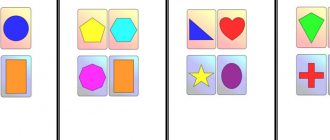- Reports and messages
- Plants
- Rowan
Rowan is an unforgettable plant, the bright berries of which often turn us to the past, to childhood, or remind us of warm summer.
In the old days, it was mentioned in every home as a protector against illnesses. Currently, there are many signs associated with it. If we take the meaning of the word ripple as a basis, then we can compare the appearance of the berries from a distance with irregularities and protrusions on the surface. This became one of the options for the name of the berry.
It is found in the Urals, the territory of the North Caucasus, and occupies the forest zone of the European part of Russia. Among the main characteristics of mountain ash, the first place is its adaptability to harsh winter conditions; in addition, it loves shade and moisture. The climate of the southern regions of Russia is difficult to tolerate.
There are more than 80 species of rowan in the world. The most common mountain ash is a small tree (up to 15 meters), the table of which has a smooth gray surface. The crown resembles an openwork pattern.
Rowan blossoms typically occur in late summer and early autumn. The unusually bright fruits of this tree, collected in clusters, are very similar in structure to apples. Each bunch contains up to 50 berries. The rowan berry contains from 4 to 8 seeds. Its leaves are miniature and have serrated edges. Rowan berries acquire their unique taste with the onset of frost.
The lifespan of this tree reaches 200 years. The first flowering of rowan occurs at the age of 7 years.
The use of rowan is so widespread that children know about it. This is an ornamental plant that serves as decoration in the home or at a holiday. Well-known types of painting, for example, Khokhloma, contain drawings with weighty bunches of these berries. Currently, the use of mountain ash in landscape design is widespread. Bright fruits, which sometimes delight people even in winter, give a great mood. The leaves are suitable for preparing decoctions and infusions. Rowan berries form the basis of food for birds and animals. For humans, it is a storehouse of vitamins, including malic acid, vitamin C, and a large amount of carotene. Tannins contained in both berries and wood. Prevents the process of decay. That is why the durable, elastic wood surface of rowan has been used for a long time in the construction industry, for the manufacture of joinery.
Delighting the eye with its rich color, it takes place in works of art - painting, folk art, literature.
Report No. 2
Rowan is a low tree or tree-like shrub. Belongs to the deciduous genus and the Rosaceae family.
These trees are common in temperate climate zones: in Russia, Europe, Asia, and the north of the Caucasus. They grow in single specimens in forest and forest-steppe areas, on forest edges and clearings, as well as in parks, squares, and courtyards. The tree is unpretentious and grows on almost any soil.
Rowan has a very beautiful appearance. This tree has a smooth, smooth, shiny trunk and a dense, openwork foliage crown. It usually grows to a height of about 10 meters. The trunk of this tree is durable and elastic and is used for making dishes, carts, tool handles and in carpentry. And from rowan branches they weave furniture and various accessories.
Rowan blooms in late spring - early summer. When blooming, the flowers are white, pink or cream in color and are folded into umbrellas. The fruits ripen in early autumn. The berries are spherical in shape and colored bright red or bright orange. The size of these fruits is 10 mm, and they taste bitter. Rowan leaves have an oblong, pointed shape and are no more than 20 cm in size. In autumn, the leaves turn yellow and red. The lifespan of rowan is about 100 years.
Rowan is a winter-hardy tree, so it can withstand frosts in winter without any problems. Rowan fruits are distinguished by strong bitterness, which disappears after the first light frost and the berries acquire a sweetish taste. Rowan does not shed its berries in winter, thereby attracting the attention of titmice and bullfinches.
There are about 80 types of rowan. And only a few types of rowan grow in Russia: common, Siberian, smooth, Kashmir. The most common is the ordinary type. The berries of this species are red in color and have a tart, bitter taste. Siberian mountain ash is also called Anadyr or polar. This species survives frost, but grows no more than 3 meters in height. Smooth rowan or Amur rowan differs from other types in the orange color of the berries. And the Kashmiri mountain ash has completely white berries. This rowan is grown mainly for decorative purposes.
Currently, the most popular varieties are: Titan, Scarlet large, Rubinovaya, Daughter Kubovaya, Businka, Burka, Granatnaya, Dessertnaya, Vefed, Michurinskaya dessert, Angri. The Titan, Granatnaya and Burka varieties are excellent for preparing decoctions that are used for illnesses. And the varieties Vefed, Businka and Daughter Kubova have a sweetish taste. But the sweetest variety is Michurinskaya dessert. The Angri variety is characterized by large berries the size of cherries.
Rowan is a very healthy fruit tree, as it contains a large amount of vitamins A, B, C, as well as potassium, phosphorus, zinc, calcium and iron. Rowan fruits are eaten fresh, dried and pickled. The berries are used to make medicines, marshmallows, marmalade, syrups, compotes, add to tea, and also make jam, jams and preserves from them.
Summary of the conversation with children of the senior group "Rowan"
Martynovich Raisa Valentinovna
Summary of the conversation with children of the senior group "Rowan"
Conversations with older children. Topic: "Rowan".
The purpose of the conversation: to deepen the child’s understanding of the benefits of rowan, where it grows, and external features.
Tasks:
- give children new knowledge about rowan;
- encourage children to make independent statements and reasoning;
— develop cognitive interest in the world around us, communication skills;
- activate speech, memory, attention and thinking;
- cultivate the ability to see the beauty of nature.
Previous work: observing rowan trees while walking, reading and memorizing poems, signs, riddles about rowan trees.
Material: bunch of rowan, Sukhomlinsky’s story “The Bird's Pantry”, illustrations of rowan.
Vocabulary work: landscape.
Progress of the conversation.
Educator:
guys, I'll tell you a riddle. Guess what we'll be talking about.
Green in the spring, tanned in the summer,
I put on a red necklace in the fall. (Rowan).
Educator:
That's right, it's a rowan. The beautiful rowan tree, sung in folk songs and poems, worthily adorns the landscape of our Motherland. It can be found in the forest, on the edges. Rowan also grows in our kindergarten. Now, in the fall, it is impossible not to notice it. Bright clusters, like red corals, delight our eyes.
Educator:
let's describe the rowan. Tell me, what is she like? (Children describe rowan).
- You can argue about which of the trees is nicer and more beautiful to the human eye: either a slender birch, or a sunny ash or a majestic oak, or maybe pyramids of eternally emerald firs? But only one thing is certain: many people like the beautiful rowan tree, with openwork leaves and a necklace of orange fruits. People love her. It’s hard to look at it enough: in the summer, snow-white shields of flowers sparkle between the lacy foliage, and in the fall, when the branches bend under the weight of bright orange fruits, the beautiful mountain ash becomes even more elegant. Its fruits linger on the branches for a long time and even remain for the winter, standing out brightly among the snow-covered forest.
Showing a bunch of rowan berries. Questions for children:
-What are these red beads? (Bunches of rowan).
- What kind of berries do rowan berries have? (Red, round, beautiful).
- What can they be compared to? (With necklace, buttons).
-What do they taste like? (bitter).
Reading Sukhomlinsky's story "The Bird's Pantry".
In early autumn, the chirping of birds did not cease in the steppe. The birds flew to the field and pecked the grain. Rowan stood at the edge of the forest. The berries hung on it in red clusters. She stands there and wonders why the birds don’t fly to her. Drozd and Rowan flew and asked him:
- Drozd, why don’t you want to try my berries?
- Wait, Rowan, your berries will come in handy in difficult times. On your branches there is a bird's pantry.
- Treat us, Rowan, with your berries.
- Why was Rowan surprised?
- What conversation took place between Rowan and Drozd?
- Why did Drozd call Rowan a bird's pantry?
- Who likes to eat its berries? (Children's answers).
Educator:
Since ancient times, it has been customary for people to plant rowan trees under the windows of homes, in front gardens and parks as a sign of memorable events, for the happiness of people, for the joy of birds. Blackbirds, bullfinches, waxwings, black grouse, wood grouse, and jays especially like to feast on rowan fruits. Birds eat only rowan fruits, but animals, in addition to fruits, eat leaves, buds, and young shoots of rowan. There are a lot of vitamins in them. Foresters know about this and therefore, in the summer, they prepare brooms from rowan branches: in a hungry winter, forest animals will treat themselves to them with great pleasure.
Didactic game “Who is the mountain ash friends with?”
Goal: to form in children an understanding of those animals that rowan helps to survive in the cold winter.
- Rowan, rowan, who did you love? (hug yourself, tilt to the right).
- I loved everyone, I pleased everyone, (hug yourself, tilt to the left).
— I treated everyone to ripe berries. (we hold out our hands).
- Pick a berry, help yourself too. (raise our hands to the top).
Educator:
Rowan fruits are harvested after the first frost, when they acquire a bitter and sour taste. Fresh fruits are a little bitter, but when caught by the first frost, they lose their bitterness, become less tart and acquire a pleasant sour taste. Rowan berries contain a large amount of vitamins. Since ancient times, people have noticed the healing power of rowan and began to use it to treat diseases. Delicacies and drinks are prepared from the berries, and tea is made from the flowers. The benefits of rowan are great. Furniture and musical wind instruments are made from rowan wood. It is a fruit plant, a fodder plant, a medicinal plant, and a melliferous plant. She is both a beauty and a protector of soils.
Educator:
People have written songs, poems, riddles, proverbs and omens about rowan.
Didactic game “Continue the sign.”
- A lot of rowan berries -... (autumn will be rainy, if there are few, it will be dry).
Educator:
Guys, what did we talk about today? What new have you learned? How and to whom does rowan help? How is rowan similar to other trees and how is it different?
Thematic conversations for the older group 1. “Sweatshirts and caftans” Goals: to introduce children to what, from what fabrics clothes are made. Expand children's understanding of the variety of clothing.
Summary of the conversation for children of the senior group “Water around us” Goal: to enrich children’s knowledge and ideas about water. Objectives: Educational: Expand children's understanding of the properties of water and the meaning of water.
Summary of a conversation on cognitive development for children in the senior group “Take care of the forest” Goal: to expand children’s understanding of the benefits of forests in human life. Objectives: 1. Educational objectives: to cultivate a feeling of love for others.
Summary of a conversation with children of the preparatory school group “Water in a liquid state” “Water in a liquid state” Purpose: to continue to introduce the properties of water, its transformations, presence in living nature, as well as its meaning.
Summary of a conversation with children of the middle group “Theater” Goal: To expand children’s ideas about the world of theater, about theatrical professions, to stimulate their interest in theatrical art Objectives: •.
Summary of a walk in the senior group “Rowan - a bird feeder” Observation: “Rowan - a bird feeder.” Goal: To cultivate in children an interest and kind attitude towards birds and nature in general. Dictionary enrichment:.
Source
Rowan tree
Rowan is a tree that never grows tall (more than 10 m). There are just over 100 species of rowan, about 30 of which can be found in Russia. This tree is widespread in European countries, lives in North America, and also grows in Asia. Such a large habitat of the plant is due to the fact that rowan is not at all afraid of frost; it can grow on any soil. It even “climbs” into the mountains, but there it grows in the form of a bush. It is also not afraid of close-lying groundwater, which for most trees is an unsuitable factor for good growth.
Because of this unpretentiousness to climatic conditions, this tree can be used in gardening as a rootstock: used as a mother plant, grafting a quince or pear onto the rowan trunk. The so-called chokeberry is not a rowan, it is a different tree, although from the same family - Rosaceae.
Rowan is easily recognized by its leaves, which have from 11 to 23 leaflets. Young, just blossomed, they are a little “fluffy”, then they become naked. They are green in the summer and turn orange and red as autumn approaches.
The rowan tree blooms very beautifully. Its small flowers form very dense inflorescences located at the ends of the branches. The smell is quite specific, not everyone likes it, but insects pollinate the tree well. Rowan is a valuable honey plant.
After flowering, characteristic fruits are formed on the tree, similar to peas or beads, their diameter is about 1 cm. It is more correct to call them apples, since the tree belongs to the apple group. The fruits are bright red or deep orange, collected in clusters, each containing seeds.
Rowan fruits are rich in sugars, vitamins, especially ascorbic acid, and carotene. Therefore, the fruits of the tree can be used to treat scurvy. They also contain antiseptic substances (sorbic acid). The fruits are eaten, prepared as tinctures, made into jam, dried and even pickled. While they are fresh, they taste very bitter. But when the first frosts come, it disappears, the bitter substances of the fruit are destroyed.
Trees are often planted for decorative purposes. Wood can be used to make carpentry and jewelry. It is reddish and beautiful, it is well processed, painted, and easy to carve.
Rowan fruits do not fall in the winter, so they are an important food supply for wintering birds. They can also be fed to poultry.
The ancient Scandinavians and Celts, as well as the Slavs, considered rowan a magical tree and used it in their rituals. Rowan has long been used in folk omens. So, if there are a lot of fruits on the trees, then the autumn months will be rainy.
2nd, 3rd, 4th, 5th grade, the world around us
About nature for children: Rowan
Bright clusters of rowan berries attract the attention of children both in autumn and winter. “Mom, what kind of berries are these? Can I try them? Are they tasty? Why are they hanging here?”
Then we’ll talk a little about this tree and learn a lot of new things about it, so we can tell our whys later.
It is interesting that rowan fruits, which we used to call berries, are actually, from a botanical point of view, apples.
Rowan grows in gardens, forests, parks and squares - from the far north to the middle zone of the northern hemisphere, and all because it is not afraid of any frost.
Is it possible to eat rowan fruits, and is there any benefit from them?
The healing properties of rowan berries have been known for a very long time and a lot, however, official medicine is in no hurry to use it for the manufacture of medicines. So, there is not a single medicine based on rowan.
People said about rowan: everything is the same, both bread and rowan: both are sour. And of course, for good reason, because in order to take an honorable place next to bread in folklore, it is necessary to have amazing properties. What's the secret?
Rowan berries are very rich in vitamins C, A, PP, B1, B2, E, K, iron, copper, manganese, iodine, zinc, potassium, magnesium.
In ancient times, in Rus', rowan branches decorated tables. They were served drenched in honey or sugar syrup; the rowan berries were fermented and dried. Today in cooking they are used to make jams, preserves, sauces, and jelly.
When fresh, the berries have a sour-bitter taste and are unlikely to be liked by anyone. The bitterness of the berries disappears somewhat after frost, which is when it is recommended to collect rowan berries to prepare something from them. This is explained by the fact that the substance that causes bitterness (amygdalin) is destroyed by frost and rowan becomes harmless for consumption.
Rowan fruits are of great benefit to birds, in fact, being the most accessible food in winter.
Very often the image of rowan can be seen in the folk art of the Slavs, Scandinavians, Celts, what is this connected with?
The thing is that since pagan times, people have endowed rowan with magical powers that could protect against evil spirits and witchcraft. It was not customary to joke with rowan; they always treated it seriously and respectfully.
At first, rowan branches were sewn onto clothes, trying to protect oneself from the evil eye, then they began to embroider the image of a rowan branch on clothes. Later, the image of rowan appears in folk crafts, for example, in Khokhloma painting.
After talking with your child, invite him to draw bunches of rowan berries or make a craft out of them.
Give the kids riddles:
I look out my window, I see one tree. The red clusters are hanging, the birds want to eat them. (Rowan)
Source
Popular message topics
- Planet Earth as part of the Solar System
Planet Earth is located in the Solar System and stands, along with the other planets, in third place from the Sun. The planet has one satellite - the Moon. The position of the planet and satellite depend on many factors taking place on Earth. - Muscles
What are muscles? This is the most active part of our motor system, thanks to which we can perform various actions: walk, jump, swim, and so on. But these processes are not only external, - Pope The
Pope is the head of the Catholic Church. He is endowed not only with religious power, but also performs the functions of the sovereign of the state and the monarch. The functions of the pope are exclusive and inseparable.
Conversation with children about trees: rowan
Purpose of the conversation:
— expand children’s knowledge about birds, their way of feeding in winter;
— about the healing properties of rowan fruits;
- encourage children to make independent statements and reasoning.
- develop creative imagination, memory, thinking, cognitive interest in the world around us, cultivate love for nature, the desire to protect it, and do good.
Previous work: Observing rowan trees at different times of the year, tasting rowan berries, reading and memorizing poems, signs, riddles about rowan trees.
Material: bunch of rowan, Sukhomlinsky’s story “The Bird’s Pantry”, illustrations of rowan in different seasons.
The Riddle of the Rowan
I put on a red necklace in the fall. (Rowan)
-What are these red beads? (Showing a bunch of rowan berries)
- What kind of berries do rowan berries have? (Red, round, beautiful)
- What can they be compared to? (With necklace, buttons)
-What do they taste like? (bitter).
Rowan can be found in the forest, on the edges, and it is even in our park. After all, we went to visit her more than once. It has beneficial medicinal properties, so every season gives it a beautiful outfit.
— What does spring give to rowan? (White, fragrant flowers, green leaves)
—What does the rowan tree wear in autumn? (Into red and orange leaves)
- What does winter do for mountain ash? (Covers it with white snow and invites birds to eat berries)
— People say “Rowan is an adornment of our nature.” Let's ask the mountain ash why it is called that.
Rowan: Because I am endowed with magical powers. A branch with bright red berries can protect a person from any disaster. My tree also helps the sick. Medicinal tea is brewed from the branches. The berries are used to make jam, compotes, kvass, and tinctures.
Educator: Yes, rowan has many properties, in particular, predicting the weather with the help of signs. What signs do you know?
Didactic game “Continue the sign”
Educator: But in winter, unlike some trees, rowan has a lot of work. She needs to feed all the hungry birds. In winter, it is difficult for birds to get food. And this is where rowan berries come in handy. Tits, blackbirds, bullfinches and other wintering birds flock to the feast. That's why rowan is called a bird tree. In the forest, not only birds eat fruits, but also animals: squirrels, wild boars, martens.
Reading Sukhomlinsky's story “The Bird's Pantry”
In early autumn, the chirping of birds did not cease in the steppe. The birds flew to the field and pecked the grain. Rowan stood at the edge of the forest. The berries hung on it in red clusters. She stands there and wonders why the birds don’t fly to her. Drozd and Rowan flew and asked him:
- Drozd, why don’t you want to try my berries?
- Wait, Rowan, your berries will come in handy in difficult times. On your branches there is a bird's pantry.
- Treat us, Rowan, with your berries.
- Why was Rowan surprised?
- What conversation took place between Rowan and Drozd?
- Why did Drozd call Rowan a bird's pantry?
- Who likes to eat its berries? (Children's answers)
There are many songs about rowan. People have loved rowan since ancient times. People have planted it near their houses for a long time.
In the far north, rowan was the only fruit tree for quite a long time. It was protected, the berries were stored for future use, as they contain a large amount of vitamins.
Source








